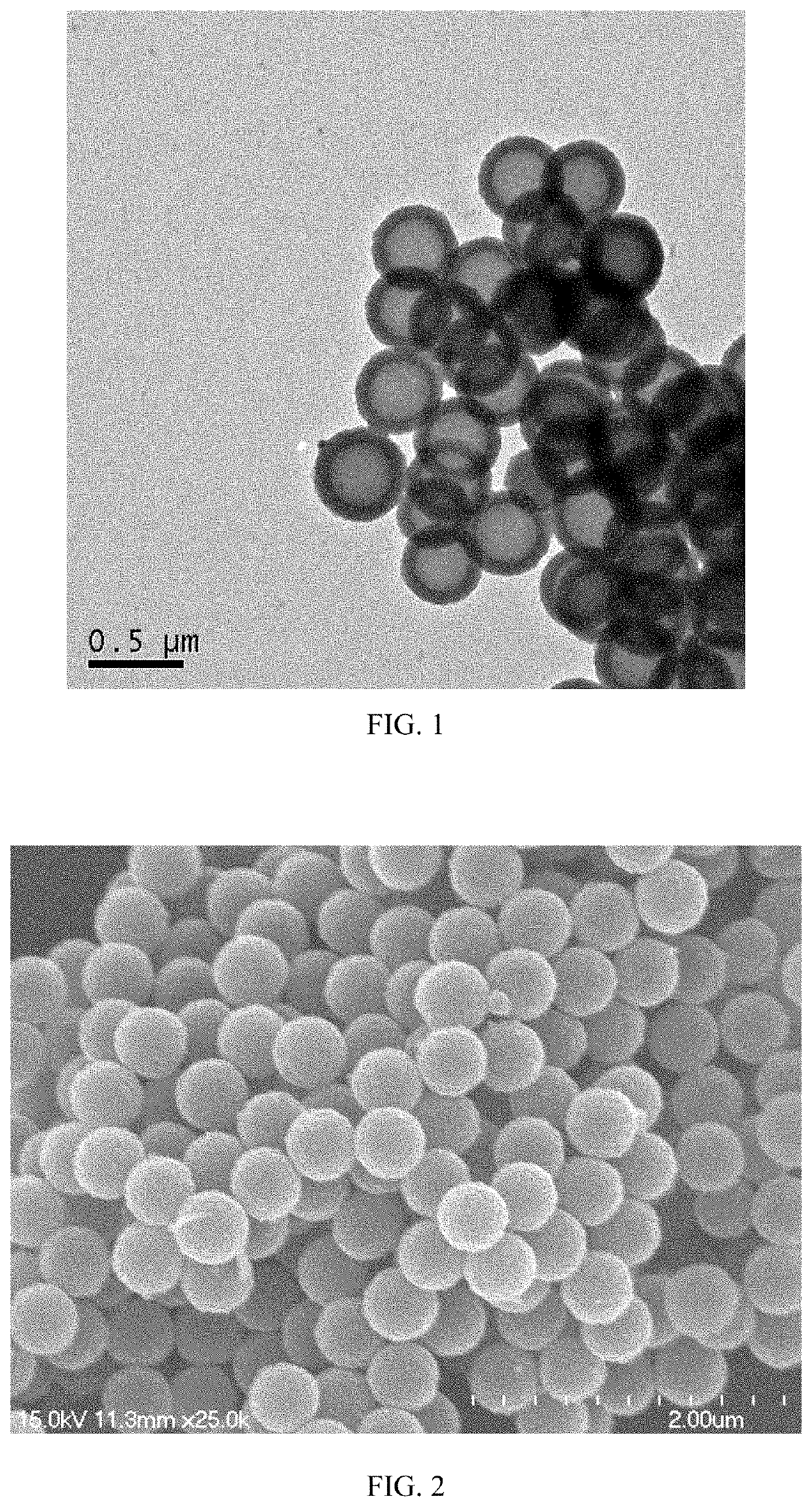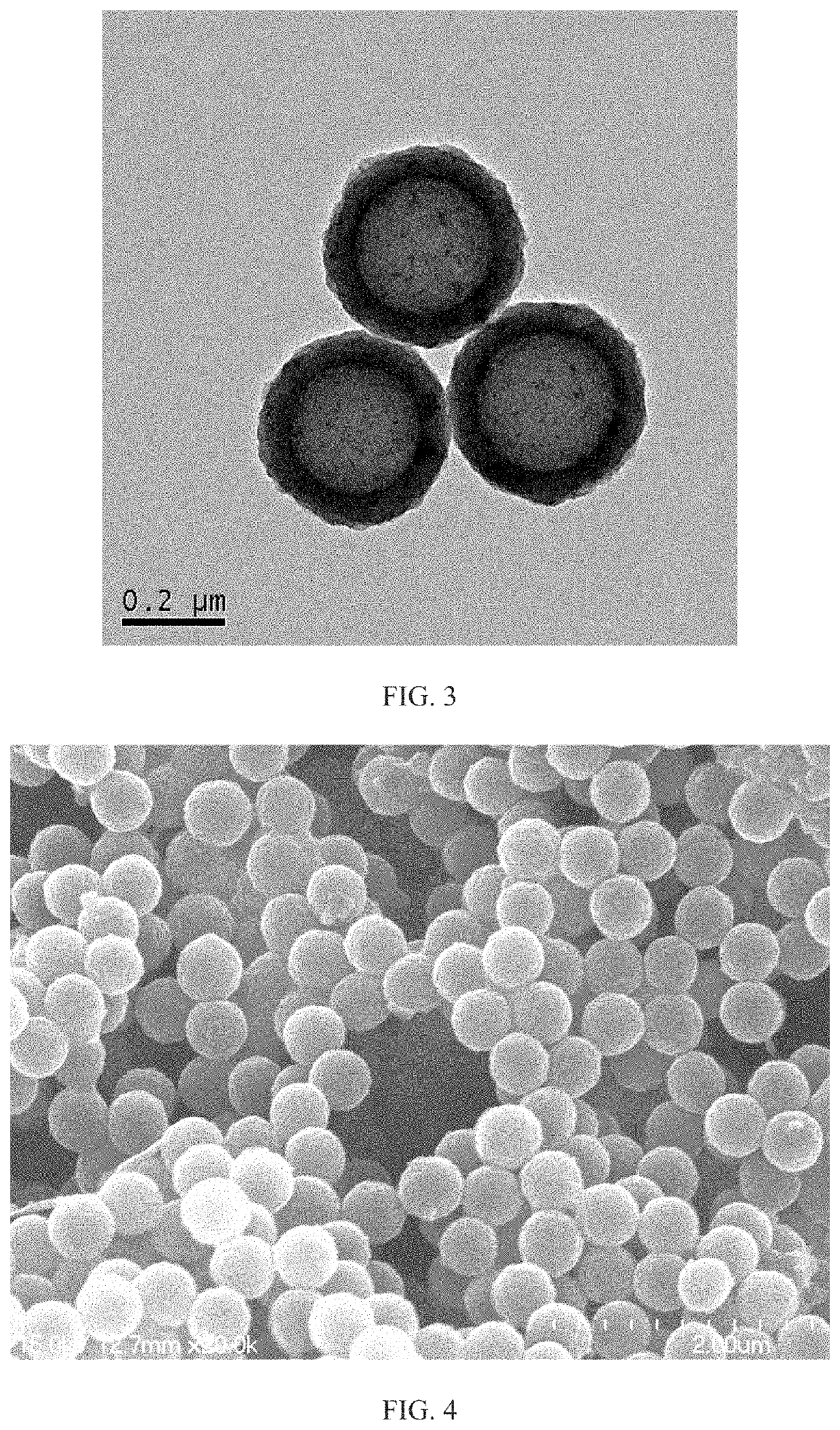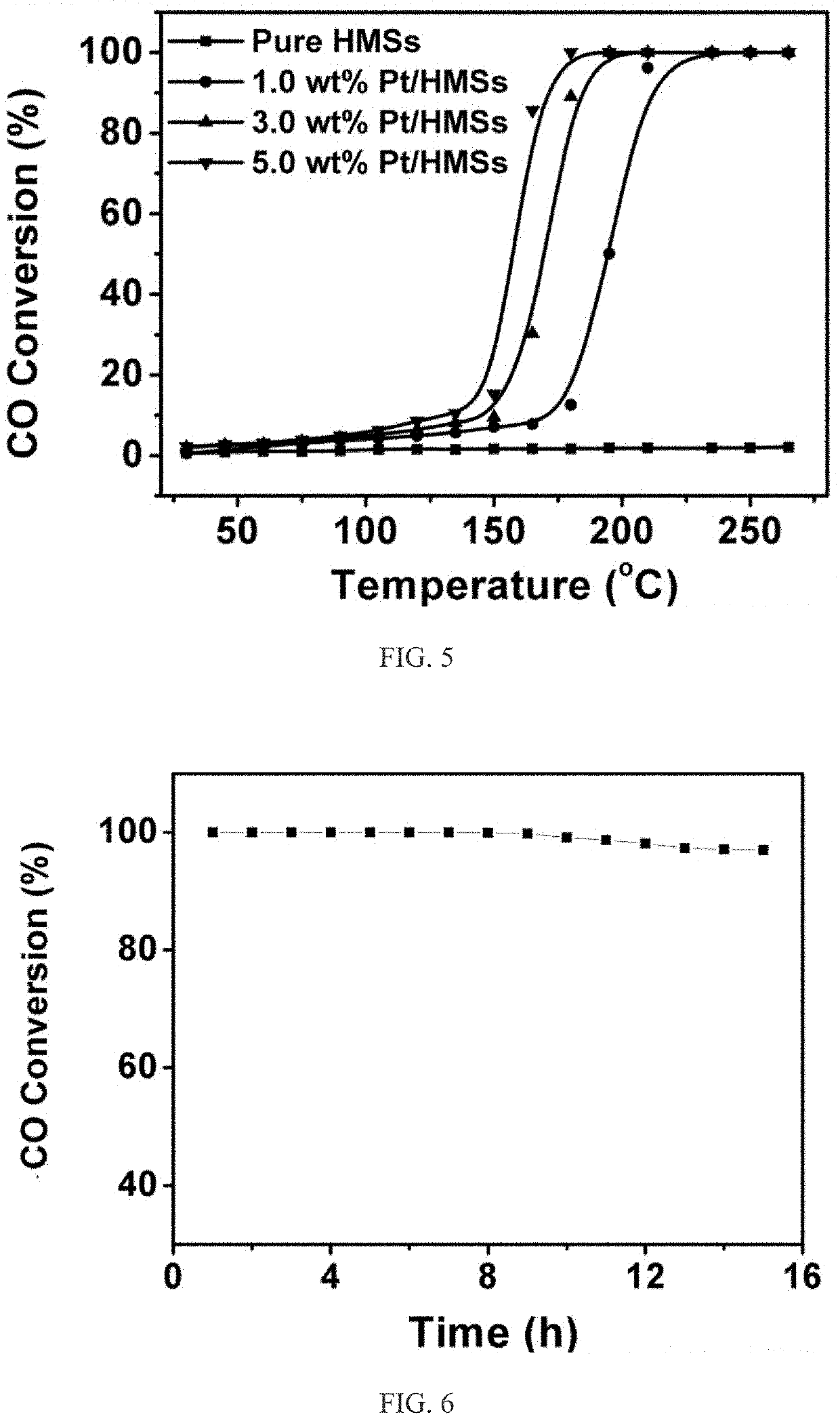Dinuclear rhodium complex-doped platinum/hollow mesoporous silica sphere composite material, and preparation method and application thereof
a technology composite material, which is applied in the field of dinuclear rhodium complexdoped platinum/hollow mesoporous silica sphere composite material preparation, can solve the problems of human hypoxia, harmful toxic gases, and damage to the ecological environment, and achieves high porosity, controllable structure, and large specific surface area
- Summary
- Abstract
- Description
- Claims
- Application Information
AI Technical Summary
Benefits of technology
Problems solved by technology
Method used
Image
Examples
embodiment 1
[0056]Preparation of Hollow Mesoporous Silica (HMSs), the Specific Steps are as Follows:
[0057]58.5 g of ethanol, 10 g of deionized water, and 3.1 g of ammonia solution are mixed and stirred for 30 min at room temperature. Then, 5.2 g of TEOs is added to the above mixture with vigorous stirring for 10 min and left stationary for 60 min. Then 3.33 g of TEOs and 1.51 g of C18TMOs are mixed and added into the above mixture and stirred for 1 min. The mixed solution is kept for 3 h without stirring at room temperature, separated by centrifugation to obtain sSiO2@mSiO2. The product is selectively etched at 80° C. for 2 h with a sodium carbonate solution having a concentration of 0.6 mol / L. After drying, it is calcined in air atmosphere with the heating rate of 5° C. / min to 550° C. for 6 h to get HMSs.
[0058]FIG. 1 shows the TEM images of the HMSs. FIG. 2 shows the SEM images of the HMSs. The figures show the uniform hollow sphere structure, and the distribution is more uniform.
embodiment 2
[0059]Preparation of Platinum / Hollow Mesoporous Silica Composites (Pt / HMSs), the Specific Steps are as Follows:
[0060]The HMSs are first subjected to surface amination modification, 2 g of HMSs are added to 200 ml of ethanol containing 10 g of 3-aminopropyltriethoxysilane, followed by heating under reflux for 24 hours, centrifugation, and washing with ethanol and water. The resulting aminated silica is then added to different concentrations of chloroplatinic acid in aqueous solutions at concentrations of 5 mmol / L, 10 mmol / L, and 20 mmol / L (corresponding to Pt / HMSs loadings of 1%, 3%, 5% platinum), then stirred under vacuum for 3 h, centrifuged, and calcined under a hydrogen atmosphere at a heating rate of 2.5° C. / min for 3 h at a temperature of 300° C.
[0061]FIG. 3 is a TEM image of Pt / HMSs, and FIG. 4 is an SEM image of Pt / HMSs. It can be seen from the TEM image that the platinum nanoparticles are successfully loaded into the pores of the HMSs and the distribution is relatively unifo...
embodiment 3
[0064]Preparation of a Dinuclear Rhodium Complex:
[0065]0.15 g of triphenylphosphine and 0.15 g of rhodium acetate dimer are added to 10 to 20 ml of acetic acid at a heating temperature of 120 to 150° C. for a reflux time of 45 minutes, and then a purple product dinuclear rhodium complex is obtained.
PUM
| Property | Measurement | Unit |
|---|---|---|
| Temperature | aaaaa | aaaaa |
| Temperature | aaaaa | aaaaa |
| Temperature | aaaaa | aaaaa |
Abstract
Description
Claims
Application Information
 Login to View More
Login to View More - R&D
- Intellectual Property
- Life Sciences
- Materials
- Tech Scout
- Unparalleled Data Quality
- Higher Quality Content
- 60% Fewer Hallucinations
Browse by: Latest US Patents, China's latest patents, Technical Efficacy Thesaurus, Application Domain, Technology Topic, Popular Technical Reports.
© 2025 PatSnap. All rights reserved.Legal|Privacy policy|Modern Slavery Act Transparency Statement|Sitemap|About US| Contact US: help@patsnap.com



